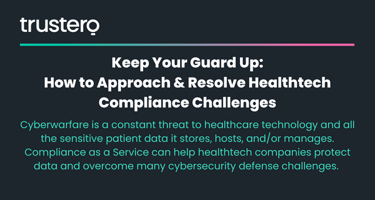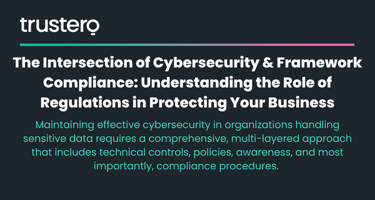HIPAA compliance is perhaps the most critical of all requirements for startups and small sized...
What Every Business Needs to Know About HIPAA Requirements: A Checklist
What is HIPAA and what does it protect?
The Health Insurance Portability and Accountability Act of 1996, commonly known as HIPAA, is a law that protects critical patient data and prevents it from being misused or disclosed without the knowledge or the consent of the patient, through the creation of a set of standards and regulations.
HIPAA and HIPAA Security Rule are both enforced by the Department of Health and Human Services (HHS) of the United States of America for all organizations that manage, store, or host sensitive patient information as part of their operations.
What organizations or businesses are required to be HIPAA compliant?
HIPAA is a law that is specifically targeted towards the regulation and supervision of the healthcare industry. There are three main types of entities that HIPAA laws regulate based on their exposure and use of Protected Health Information (PHI):
- Covered Entities: These are organizations that are directly involved in either the creation, or communication/transmission of patient health information. This may either be for the purpose of performing medical procedures, or for generating, issuing or accepting the payment for such procedures. This includes healthcare providers, insurance companies, and pharmacies. These entities and their operations are subject to the complete spectrum of all standards laid down by HIPAA.
- Business Associates: These are entities that are exposed to patient data, but do not create it themselves. They include IT/SaaS organizations, law firms, accounting agencies, and consultants within the healthcare industry.
- Subcontractors: Subcontractors are entities that are engaged by Business Associates for the purpose of acquiring assistance with certain specific responsibilities, and in this way, they may have access to PHI – albeit a limited one. Subcontractors include document disposal companies, and data hosting platforms or cloud-based service providers.
HIPAA Compliance Cheat Sheet:
Following a compliance cheat sheet or checklist can allow healthcare tech and SaaS organizations adhere to HIPAA regulations, thus playing their part in protecting sensitive information and preventing it from misuse and nonconsensual disclosure. Here are the most prominent features that every HIPAA checklist should include:
- Understand the Rules:
In order to implement compliance regulations, it is crucial to first understand them. HIPAA has three main subsets: the Privacy Rule, the Breach Notification Rule, and the Security Rule. Knowing the difference between them, and exactly where they apply, can help organizations establish a regulated environment. - Identify & Isolate HIPAA-covered Data:
It is important to note that even though a company may exist within the umbrella of the healthcare industry, HIPAA does not apply to all of its data. This is why it is critical that a company is able to identify and isolate the information that compliance laws cover in order to lay down policies, establish controls, and create processes for its protection. To become HIPAA compliant, an organization must be able to determine its identifiable health information, and also identify all the professionals that have access to this data through the company’s systems and/or documents. - Clearly Define Compliance Efforts & Strategies:
In order to get compliant, and to remain compliant in data management, processes, and services, it is always best to have a dedicated team, department, professional or a CaaS partner that is focused on implementing HIPAA regulations. Compliance officers/platforms can help supervise and oversee processes organization-wide to ensure adherence to HIPAA laws, and are responsible for establishing a compliance administration plan for the company. - Invest In Building & Strengthening IT Infrastructure:
Patient Health Information, especially HIPAA-covered sensitive data isn’t meant to be stored just anywhere. Organizations must secure their hardware, software, and cloud-based storage where all the ePHI exists. This helps not only in securing data, but also governing necessary restrictions, establishing authorization for specific company personnel, and maintaining regular supervision. - Risk Assessment:
Risk analysis is one of the most critical aspects of HIPAA compliance. It is the process whereby a company’s vulnerabilities are assessed and addressed as part of routine internal audits. These checks and audits cover all technical, operational, and administrative processes within the organization. - Maintain Documentation:
The data generated by risk analysis, periodic audits, and the implementation of policies must be maintained and documented routinely. This helps leadership track progress, compliance efforts, and communications related to HIPAA compliance within the organization. These documents may also be required during certain audits and play a vital role in identifying and addressing vulnerabilities. - Establish Emergency Protocol & Controls:
Even with all the policies and regulations in place, companies may still experience emergencies and incidents related to data security. The most important thing in this situation is having prompt emergency controls in place to overcome the breaches, in order to prevent further loss/unintended exposure of PHI. The first step in every emergency protocol should be reporting the incident to initiate a thorough investigation. This report must be comprehensive in documenting details of the time period of the breach, and all the individuals that may have been involved in it. - Maintain Accountability:
Compliance efforts can be streamlined by defining authority and maintaining accountability when it comes to the implementation of regulations within an organization. A company must be able to track teams, departments, or individuals responsible for monitoring data, auditing processes, maintaining security, training employees, and updating technology when a data breach occurs.
Identification of PHI, and the knowledge of all the data that HIPAA covers is the first, and the most important step towards HIPAA compliance. Following an up-to-date checklist can help healthcare SaaS organizations streamline their compliance efforts and prevent security breaches, violation, and data mismanagement.
Trustero is a leading CaaS provider offering a contemporary, cloud-based platform powered by AI and LLM to help SaaS businesses automate and integrate processes that align with framework regulations and standards. The platform is designed to establish a continuous compliance environment within organizations, equipping them with all the support and tools needed to streamline their compliance journey.


